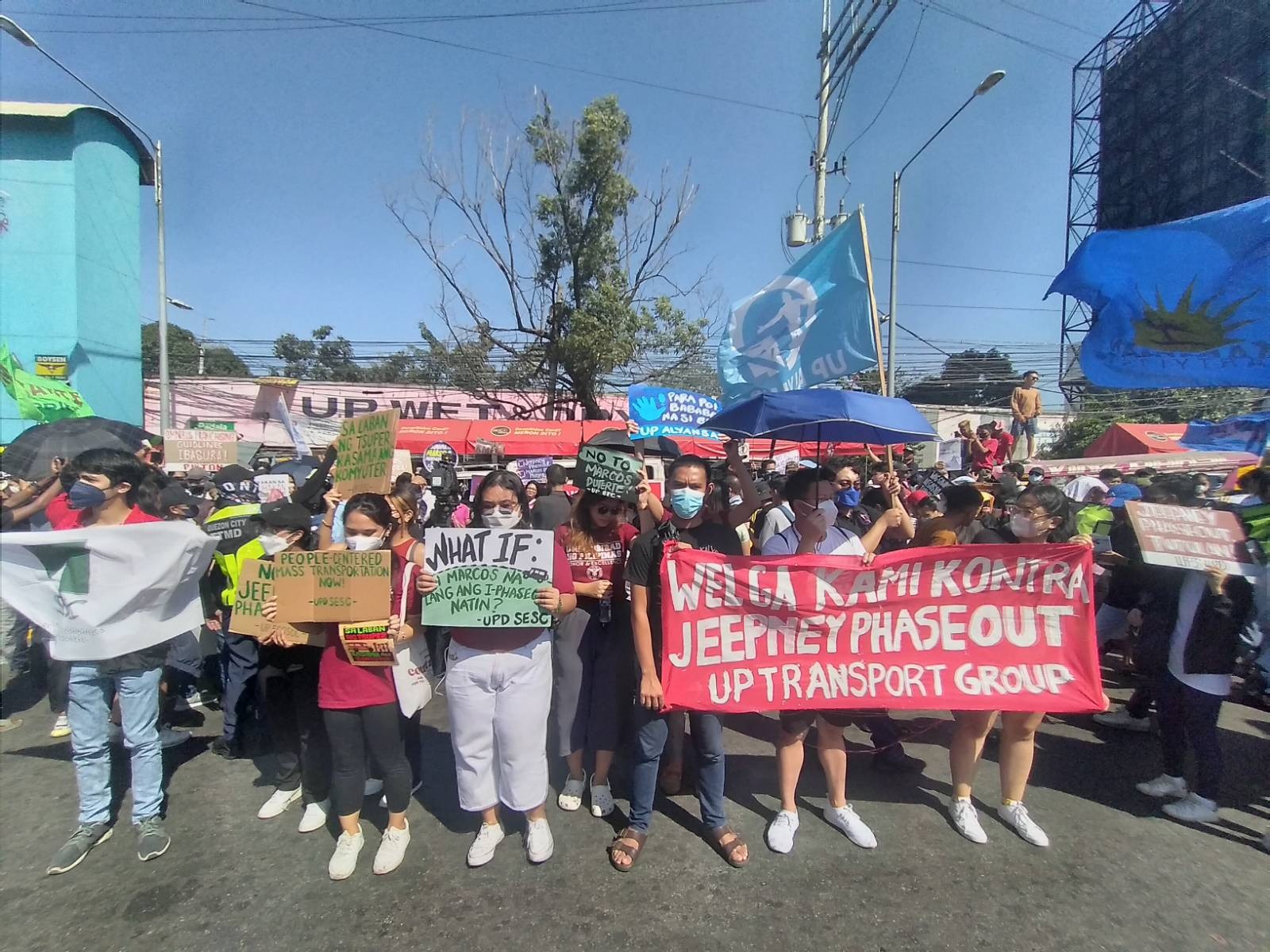Make Best Use Of Exposure with Transit Advertising Philippines
Make Best Use Of Exposure with Transit Advertising Philippines
Blog Article
Comprehending the Duty of Transportation Marketing in Enhancing Brand Visibility and Consumer Engagement
Transit advertising and marketing has actually emerged as a critical aspect in the advertising and marketing landscape, providing one-of-a-kind possibilities for brands to boost their presence and engage customers effectively. With the capability to reach a varied and restricted audience during their everyday commutes, these marketing strategies are not just about visibility; they are concerning producing purposeful connections with possible consumers. As we check out the complex benefits and innovative techniques within transit advertising and marketing, it comes to be necessary to take into consideration how these components collectively influence consumer perception and habits, raising concerns regarding their long-lasting effect on brand commitment.
Definition of Transit Marketing
Transportation advertising and marketing refers to the method of promoting products, solutions, or brand names with promotions positioned in and around mass transit systems. This kind of marketing incorporates a selection of positionings, including posters on trains and buses, electronic displays at transit terminals, and wraps on the exterior of vehicles. It aims to get to a diverse target market, maximizing the high foot traffic connected with public transit.
Transit advertising is strategically placed to record the attention of commuters, who typically invest substantial time waiting or taking a trip. By incorporating promotions right into the everyday regimens of people, brands can create a long lasting perception and foster brand recognition. The tool is especially reliable in city settings, where mass transit is a main setting of traveling.
Furthermore, transportation marketing can assist in local targeting, allowing companies to get to particular demographics based on transit paths and station areas. As metropolitan populations grow and making use of public transportation increases, this advertising and marketing technique has actually gained prestige as an essential element of incorporated advertising techniques. The dynamic nature of transportation advertising and marketing, incorporated with its capability to engage customers in a restricted environment, highlights its importance in contemporary marketing techniques.
Benefits of Transit Advertising And Marketing
The effectiveness of transit advertising and marketing exists in its ability to provide a plethora of advantages to brand names seeking to boost presence and involvement. One of the main advantages is the substantial reach it provides; transit advertisements can properly target diverse demographics throughout metropolitan locations, reaching both pedestrians and travelers alike. This broad exposure dramatically improves brand recognition.
An additional benefit is the high regularity of impacts. As transit automobiles travel along established paths and quit at numerous places, they produce recurring direct exposure that reinforces brand messages. This frequency promotes familiarity, which is crucial in customer decision-making.
Transit marketing is additionally cost-effective compared to other media systems. Given its expansive reach and potential for high impacts, brand names commonly experience a lower cost per thousand impacts (CPM), optimizing their marketing budget.
Furthermore, transit advertisements can develop a feeling of community connection. By straightening with neighborhood transit systems, brands can reverberate with regional audiences and promote a feeling of regional pride. This local strategy boosts brand name loyalty and engagement, making transit advertising and marketing a compelling choice for businesses aiming to strengthen their visibility in the marketplace.

Efficient Approaches for Transit Campaigns
To make the most of the influence of transportation campaigns, brands should utilize tactical planning and implementation customized to their target market. Initially, determining the market characteristics of the audience using public transit is crucial. This permits brand names to produce individualized messaging that reverberates with prospective clients.
Next, picking the appropriate transportation tools is crucial. Whether making use of bus wraps, metro posters, or electronic displays, each medium has one-of-a-kind advantages that can improve exposure. As an example, lively visuals on bus wraps can stand out, while electronic advertisements can be updated frequently to reflect timely promotions.
Moreover, integrating a natural branding technique across transit systems guarantees uniformity and strengthens the brand's identity. Using remarkable taglines and captivating designs will certainly strengthen brand name recall amongst travelers.
Lastly, timing is a key factor in executing effective transportation projects. Releasing campaigns during optimal traveling hours or local events can dramatically enhance visibility and interaction. By using these techniques, brands can properly harness the potential of transportation marketing, fostering greater recognition and connection with their target market. Inevitably, a well-executed transit project can drive significant development in brand visibility and customer involvement.

Gauging Effect and Interaction
In evaluating the efficiency of transportation ad campaign, exact measurement of effect and engagement is necessary for brands seeking to optimize their advertising techniques. Metrics such as reach, frequency, and impressions supply foundational data to assess presence. Analyzing these variables aids identify the amount of prospective clients are subjected to the ads throughout their day-to-day commutes.
Interaction can be further evaluated with consumer communications, such as website web traffic, social media sites states, and direct responses to calls-to-action included in the advertisements. Using devices like QR codes or one-of-a-kind URLs can facilitate tracking of consumer actions directly linked to transit projects. Studies and feedback systems likewise function as useful approaches to gather qualitative data on customer understandings and recall of the promotion.
Moreover, advanced analytics and acknowledgment you can find out more designs can correlate transportation exposure with subsequent acquiring actions, providing understandings into the roi. By utilizing an extensive approach that combines quantitative and qualitative actions, brand names can establish a nuanced understanding of their transportation advertising and marketing effect. Ultimately, this data-driven method allows brands to fine-tune their projects, ensuring they resonate effectively with target audiences and enhance general brand name exposure.
Study of Successful Projects
Effective transportation ad campaign offer as engaging instances of exactly how reliable strategies can boost brand exposure and interaction. Transit Advertising Philippines. One remarkable instance is the "I Love New york city" campaign, which changed the city's picture and drew in countless vacationers. By using train ads, signboards, and bus covers, the campaign developed a strong, natural brand identity, resulting in a significant uptick in tourism and regional service patronage
Another exemplary project is Coca-Cola's "Share a Coke" initiative, which leveraged transportation marketing to individualize the brand experience. By featuring popular names on marketing products throughout various transit systems, Coca-Cola promoted a deeper emotional connection with customers, urging them to share their experiences on social networks.
In addition, the "Got Milk?" project click this link effectively utilized public transport advertisements to get to a wide target market, strengthening the message of the significance of milk in a well balanced diet. The project saw a measurable increase in milk intake in target demographics.
These study show that when implemented attentively, transportation marketing can significantly enhance brand name exposure, foster consumer involvement, and drive quantifiable results, showing its crucial function in modern marketing approaches. - Transit Advertising Philippines
Final Thought
Finally, transit advertising and marketing works as a crucial tool for boosting brand name presence and fostering consumer involvement. By utilizing purposefully put advertisements within public transport systems, Web Site brand names can effectively get to varied audiences and reinforce acknowledgment with consistent direct exposure. The execution of targeted messaging and ingenious strategies better intensifies the effect of transit projects. Inevitably, the capability to measure interaction and assess effective case researches underscores the performance of transportation marketing in driving brand name loyalty and customer communications.
Transportation marketing has arised as a pivotal component in the marketing landscape, using special opportunities for brand names to raise their presence and engage customers effectively.In addition, transportation advertising can promote localized targeting, permitting organizations to get to details demographics based on transportation courses and terminal places.In examining the efficiency of transportation advertising and marketing projects, precise dimension of effect and interaction is important for brands looking for to maximize their marketing approaches.Effective transportation advertising and marketing projects serve as engaging instances of just how reliable approaches can boost brand presence and involvement.In verdict, transit advertising offers as an essential tool for improving brand name visibility and fostering customer engagement.
Report this page